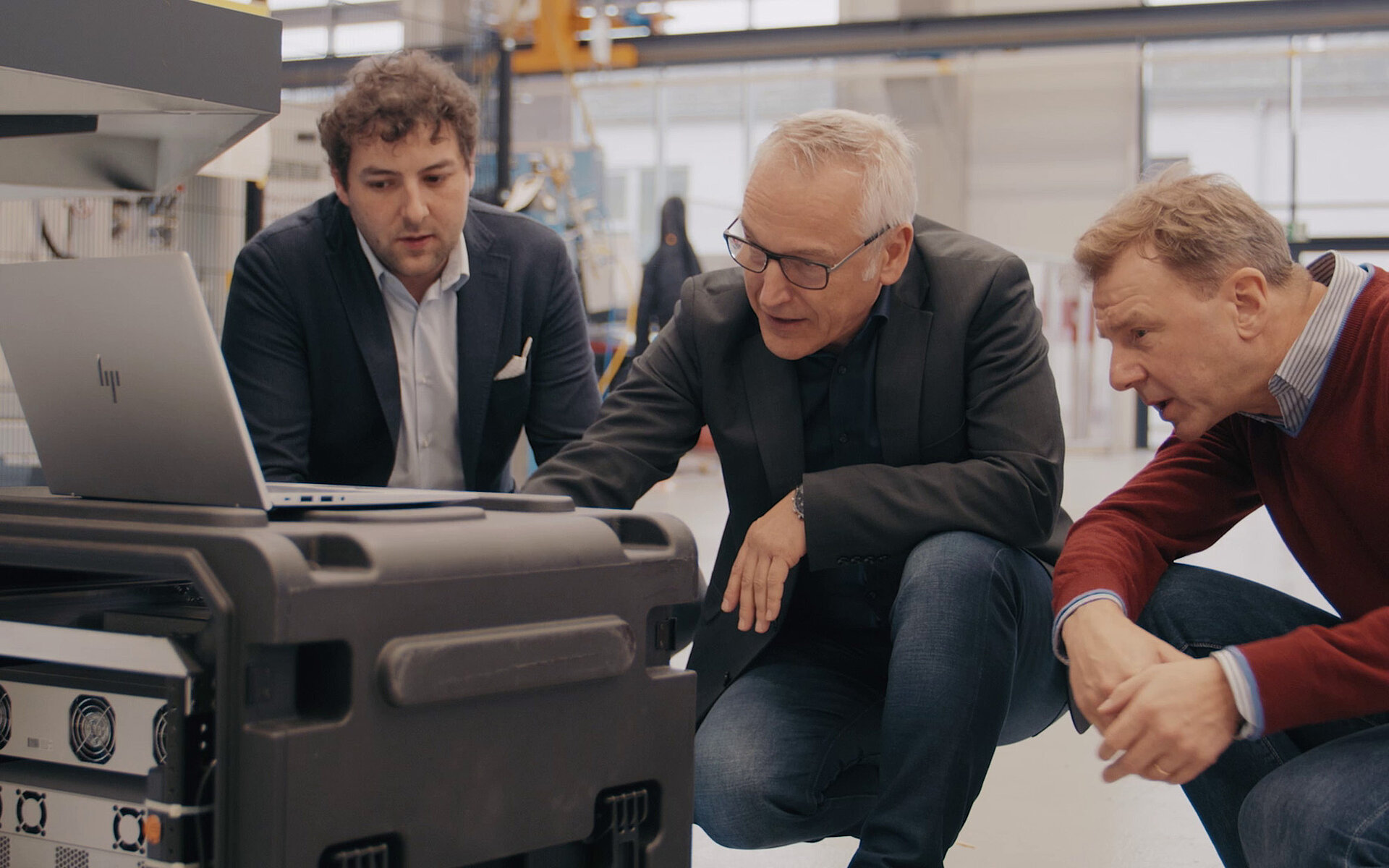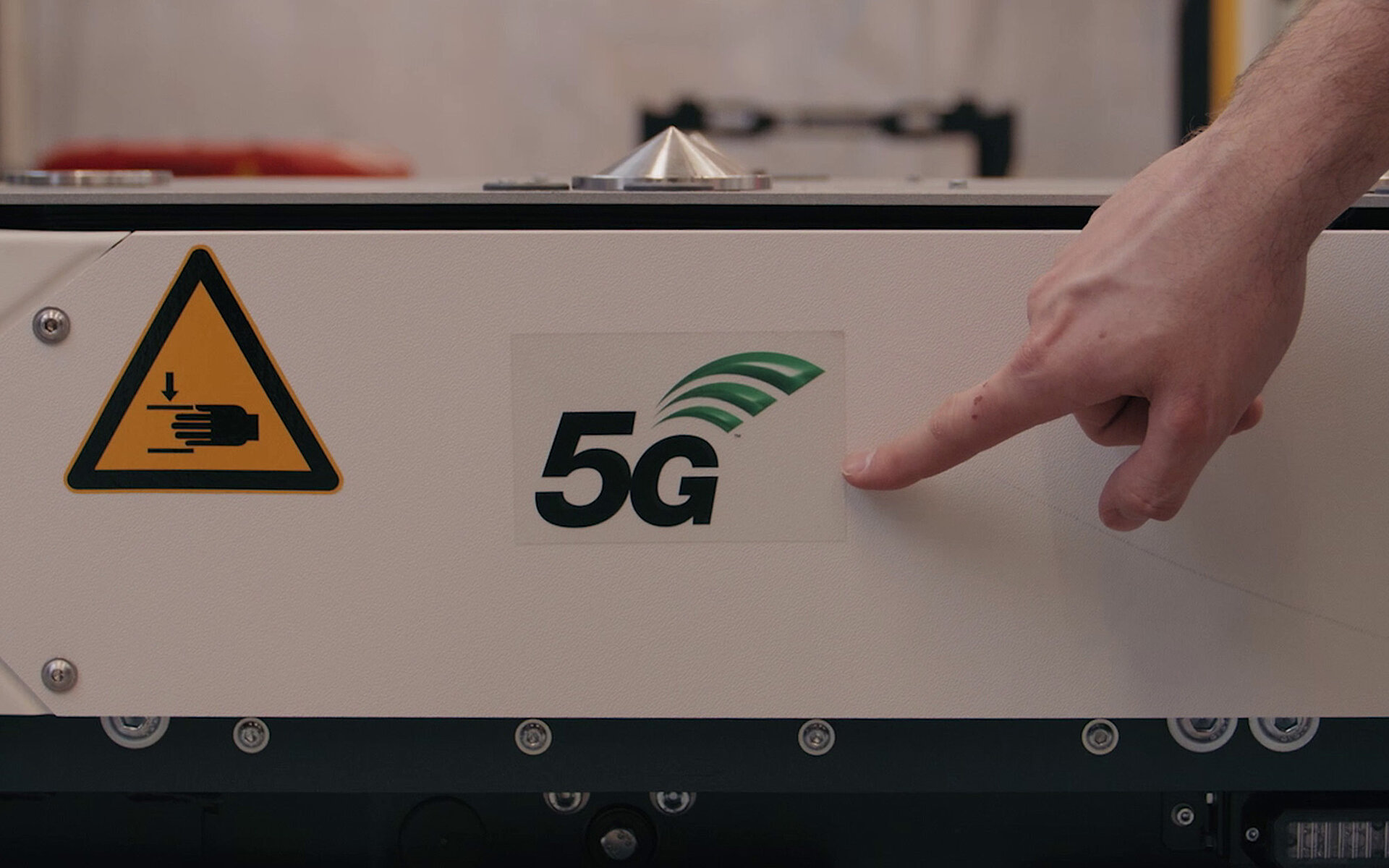Grenzebach and Ericsson ready for the 5G future
- Ericsson and Grenzebach work together closely to boost the future of the logistics industry
- Mobile network supplier Ericsson will support Grenzebach customers in building a 5G company network
- Grenzebach offers 5G and WiFi-capable automated guided vehicles
HAMLAR, DUSSELDORF/Germany. By the end of 2022, there were more than one billion 5G users worldwide. Alongside private consumers, the industry can also benefit from the advantages of the fifth generation of the mobile communications network. To lift the logistics industry to the next level, the experienced mobile communications provider Ericsson and Grenzebach are, therefore, now working even more closely together. Built for a world where the industry operates with real-time, data-driven automation, producing the highest levels of agility and productivity.
5G and Industry 4.0
The fifth generation of mobile communications, known as 5G, will substantially expand the performance of today's mobile networks. Using industrial 5G campus networks, 5G technology can be introduced to a factory floor or factory site. 5G has many special features which are essential for Industry 4.0 and its increasingly flexible and complex production processes. Ralf Wellens, Project Manager 5G for Industries at Ericsson, says: "5G enables higher data rates and more network capacities. It also provides fast response times between devices thanks to extremely low latency. The biggest advantage, however, is that it takes place in your own frequency spectrum. This means that no outside interference will enter the private network. As such, the private 5G campus network promises the highest availability."
The main difference between 5G and WiFi is the frequency spectrum used for wireless. An exclusive bandwidth is used for a 5G network. It can be acquired from the Federal Network Agency (B-Netz-A). This private network is controlled exclusively by the company. WiFi broadcasts in 2.4 and 5 GHz frequencies, which are also used by many other devices. For example: external employees enter the factory floor with a cell phone. This phone comes with its own WiFi client and transmits on the 2.4 or 5 GHz frequency affectingthe company's WiFi network. A corporate WiFi network is never entirely "clean".
Also, with WiFi, access is triggered via the end device through the so-called listen-before-talk mechanism. As a result, if the number of devices is high, the network capacity is allocated randomly. In a 5G campus network, the capacity is centrally controlled by allocating transmission times to individual participants in the network, thus ensuring that connectivity is maintained. These can be assigned individually, depending on quality-of-service parameters and prioritization.
Benefits for logistics
The various possible applications and their mobility make autonomous vehicles the ideal choice for a 5G application in Industry 4.0. This creates several potential use cases and benefits for logistics and production environments.
“Thanks to the low latency and high availability, the control system and vehicles, for example, can communicate reliably in real-time. Moreover, the entire supply chain can be monitored and controlled using intelligent sensor technology and image and audio-capable camera systems. Sensor data is instantly uploaded to a corporate cloud for further processing using AI and machine learning techniques, ensuring a fast and efficient flow of materials.”
"Special functions, such as the safety function, would also be possible in this way using 5G," adds Wellens.
Ericsson developed a unique 5G system that industrial companies can easily install for this purpose. Wellens describes the idea behind this as follows: "You get a box that contains the hardware. You assemble this, wire the whole thing, turn it on, download the software, and within half a day, the 5G system is up and running." Ericsson pays close attention to the company's requirements and surrounding conditions to provide maximum performance and availability with minimal effort for companies.
Grenzebach and Ericsson: groundbreaking partnership
Grenzebach thus started equipping their automated guided vehicles (AGVs) with 5G clients and the corresponding antennas at an early stage. Today, it's a customer choice option that they can book, similar to a car choice option. Grenzebach thus makes it possible to test 5G in the early development phase and then also to use it in real operations. "That's actually not the norm," Wellens explains, "many companies we've talked to find 5G exciting but don't offer a solution to their customers. Grenzebach does, though – that's a pioneering spirit. This is what makes the cooperation with Grenzebach so inspiring."
In the Ericsson Eurolab, the first component tests were conducted at the end of 2022. Afterward, the experts from both companies successfully connected the Grenzebach AGVs and a 5G network from Ericsson under natural conditions in the "365 Days of Grenzebach World". The first group project is already being implemented at a well-known German OEM: An entire production area is networked here using a 5G campus network to increase the OEM's productivity in production further.









